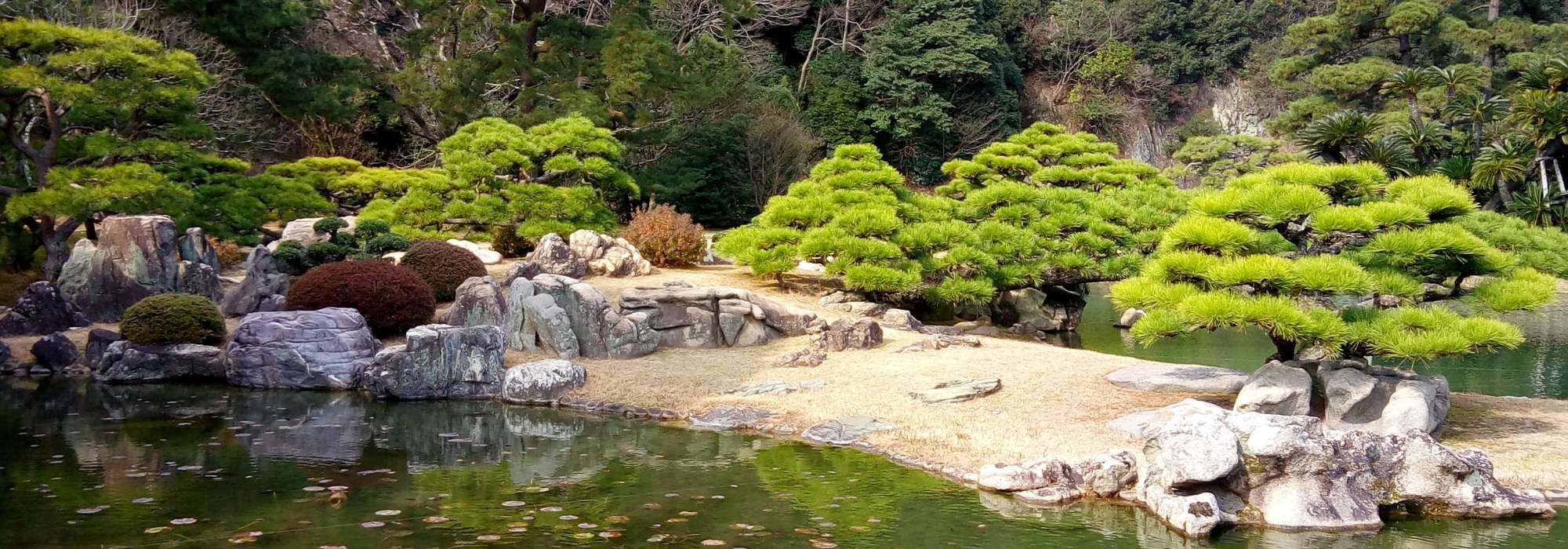
Create a Japanese or Zen garden
Composition, elements and suitable plants
Contents
Japanese garden drew inspiration from Chinese garden steeped in Buddhist influence. It originated in the 8th century and uses spare aesthetic forms, a concern for perspective to create an illusion of space, symbolic objects (stones, statues, island, bridge…) and aims to ‘borrow’ surrounding landscape (mountain, temple…).
Zen gardens, which appeared in the 10th century, are of a different, very pared-back style that some contemporary landscape designers draw on in their modern creations. They require little space and are relatively single in design.
What characterises Japanese or Oriental gardens?
Walled garden often has a small area but its composition gives impression of a large space (camouflaged boundaries, plays on perspective) and an imitation of nature (mountains, valleys, streams…) supported in the following ways :
- No symmetry but an balanced asymmetry :
– Precise placement of objects to lead eye from one point of interest to the next: plants, rocks, statues, pavilion…
– Plants of varied shapes, textures and sizes
– Contrast between rough and smooth, vertical and horizontal, soft and hard
– Movement captured by swirls in paving and planted mounds
- A garden that highlights nature’s ephemeral character with changing tableaux due to succession of flowering and seasonal leaf colour changes.
- Space intended for contemplation rather than gardening or leisure, with sinuate paths guided by Japanese stepping stones, changing views that invite concentration and meditation, and sound (water, wind in foliage…)
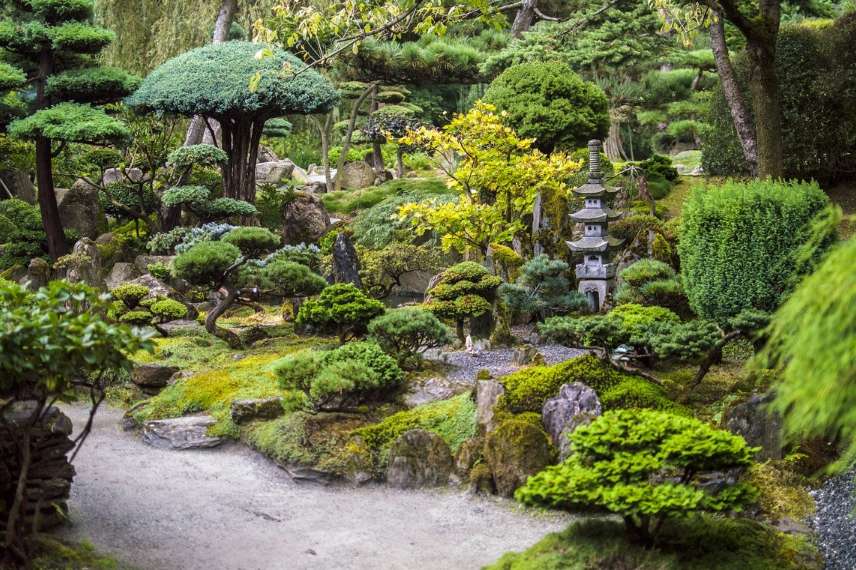
Foliage pairings
- Juxtaposing decorative foliage creates a calming scene thanks to absence of vivid colours. Shades of green and grey offer endless variety and should be combined with contrasting textures among the foliage.
- A few conifers, for which Japanese gardeners have become masters of the art of pruning them into cloud shapes, add their unusual forms to the scene.
- Autumn colours of leafy trees (Japanese maples, Prunus…) are just as important to mark the passage of the seasons.
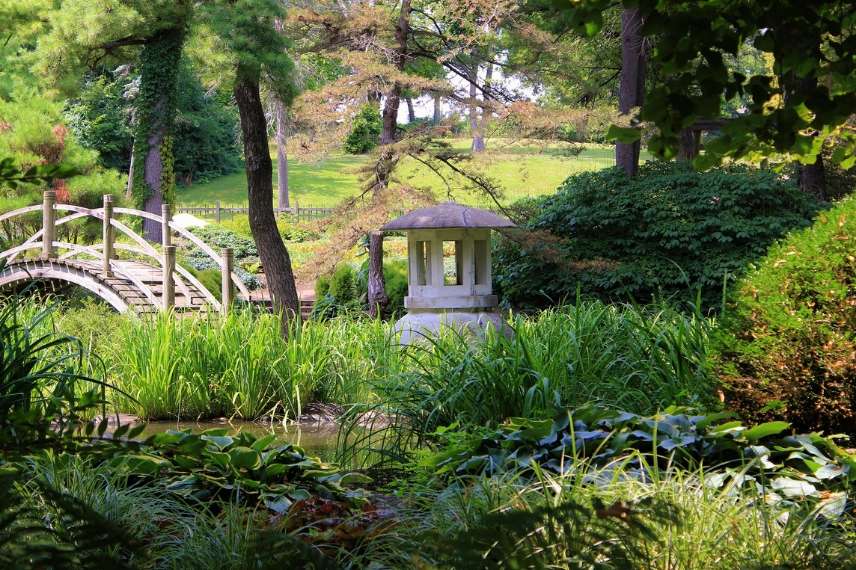
Foliage play
Discover other Japanese gardens
View all →Available in 1 sizes
Available in 0 sizes
Available in 0 sizes
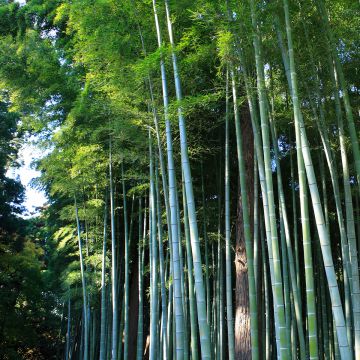
Available in 1 sizes
Available in 0 sizes
Available in 2 sizes
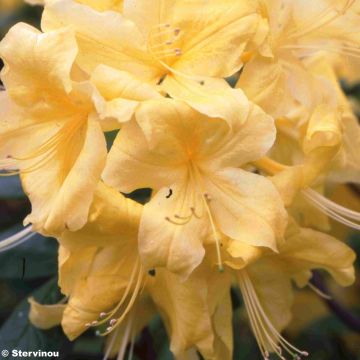
Available in 1 sizes
Available in 1 sizes
Available in 2 sizes
Available in 1 sizes
Bamboos
Bamboo bamboos are often present in Japanese gardens as their giant, regular canes invite the eye to lift skywards. Evergreen foliage enlivens the garden at the slightest breeze while creating patterns of light.
The colour of bamboo canes ranges from straw yellow to purple, through ebony black or green. Some are striate with green and yellow, such as Phyllostachys aureosulcata ‘Spectabilis’. Their height varies by cultivar, from under 1 m for Pleioblastus to over 5 m in Phyllostachys.
Bamboo is not used only as planting material; it is also used to make furniture such as water features, mobiles and lattice screens.

Bamboos
Flowering in a Japanese garden
If dark foliage provides backdrop, bright colours are nevertheless present, distributed in patches. Azaleas and rhododendrons and camellias are most representative plants of these gardens.
But do not forget soft colours of cherry trees, of flowering almond trees, of magnolias as illustrated in Japanese prints. Varieties of form, weeping in Prunus ‘Accolade’, columnar in Prunus serrulata ‘Amanogawa’, add to charm of their flowering. The copper-red barks of Prunus also display horizontal, striate markings, particularly decorative in Prunus serrula.
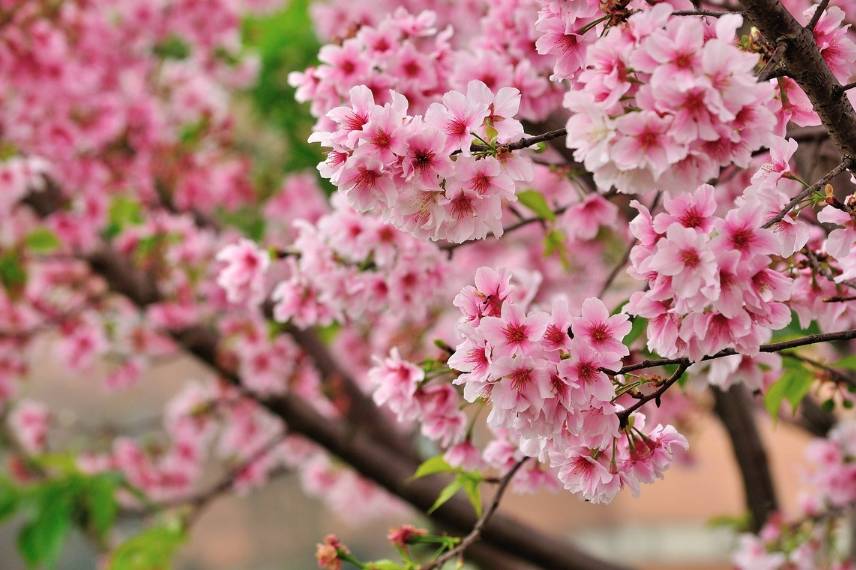
Flowering cherry that Japanese call Sakura
Among perennials, beds of Japanese primroses (Primula japonica) lavishly colour damp woodland understoreys; the simple flowers of Japanese anemones ensure flowering until autumn.
Structural plants
Spreading plants
Bushes with horizontal branches are particularly appreciated for contrasting with upright forms that reach skywards such as bamboo. They encourage the eye to travel around. These lines can be seen in pagoda roofs. The Japanese gardener reinforces this aspect by practising cloud pruning, notably on pines and junipers.
This habit is particularly elegant in the Cornus controversa ‘Variegata’, which can reach 15 m in every direction. Its variegated foliage lights up a garden corner planted with rhododendrons and camellias. Cornus kousa is even more spectacular when it unfolds its white flowering in May. Among viburnums and hydrangeas, note Viburnum plicatum ‘Mariesii’ and Hydrangea macrophylla ‘Veitchii’ for their flat inflorescences resembling lace.
Hamamelis is also interesting for its golden-yellow, highly fragrant winter flowering. Its thin horizontal branches, still naked, are covered with a multitude of crumpled flowers.
Cloud pruning
Objective of this pruning is to highlight architecture of the trunk and main branches of the tree or bush and to maintain chosen proportions and shape. This involves exposing the main branches by keeping only clumps of foliage at the tips. Pruning must maintain a balance between plant dimensions and volume of its foliage. Masses of greenery are themselves pruned to give the whole a tiered silhouette.
For pines, practise this pruning from earliest age. Choose specimens notable for twisted aspect of trunk and branches.
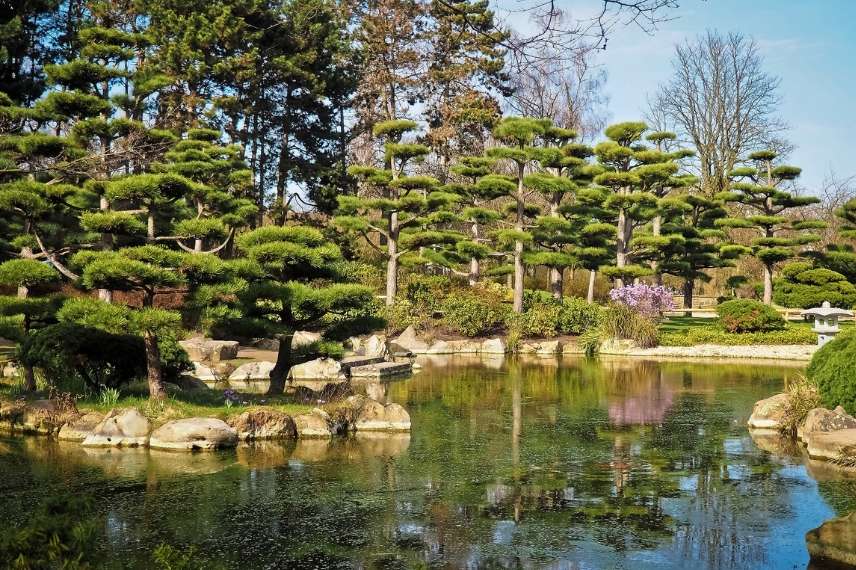
Niwaki or cloud trees
Mineral
Certain rocks are staged to symbolise a mountain that leads to the sanctuary or an island, a boat or an animal (turtle and crane symbolise longevity and happiness). Their placement should appear natural even though precise rules exist regarding orientation and colour.
An orderly arrangement of pebbles often appears in zen gardens. They can suggest a river, punctate here and there with a few large rocks. Soil may be covered with white gravel carefully raked to create striate or spiralled patterns. These restrained layouts define empty spaces from which a calming atmosphere emanates.
Stepping stones appearing in the 10th century, in stone or in wood placed in water, within a lawn or among a blanket bog (pebbles, gravel…) guide the walker to a precise spot, originally to the tea pavilion so as not to soil their kimono.
Statuary also has great importance: lanterns and buddhas guide visitors to the tea pavilion.
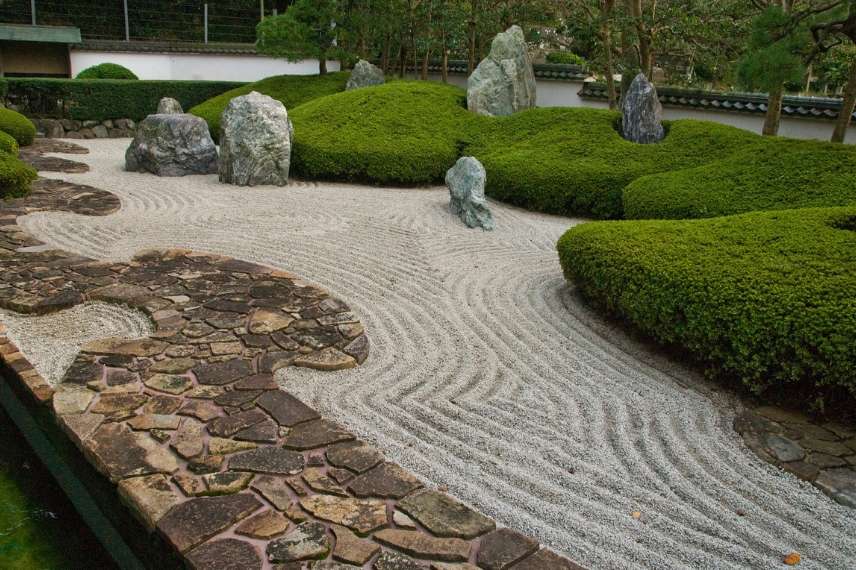
Water
Water symbolises life’s journey:
1- spring evokes birth,
2- waterfall suggests tumultuous, vibrant path of youth,
3- meanders of the stream evoke adulthood with hesitations and various paths,
4- calm waters symbolise serenity of life’s end, island, realm of immortals.
Water is sometimes merely suggested by pebbles or gravel.
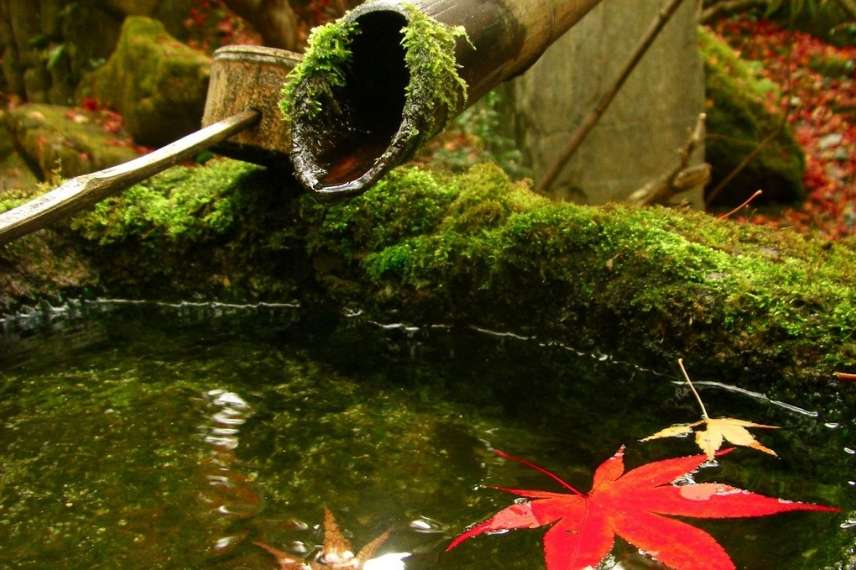
Shishi-Odoshi or Japanese bamboo fountain
Sound
Being lulled by the murmur of water invites reverie, and for some, meditation. A single filament of water may suffice. Using a seesaw mechanism, Japanese fountains (Shishi-Odoshi) are set in periodic motion. They punctuate intimate spaces with the clack of bamboo stems striking together. A small pump is enough to operate them.
Sound is also produced by the swaying of the supple branches of weeping trees or the culms of bamboos.
Learn more
- Japanese garden: 10 iconic bushes
- Japanese garden: 10 iconic perennial plants
- 7 ideas for plant pairings for Japanese garden
- Subscribe!
- Contents
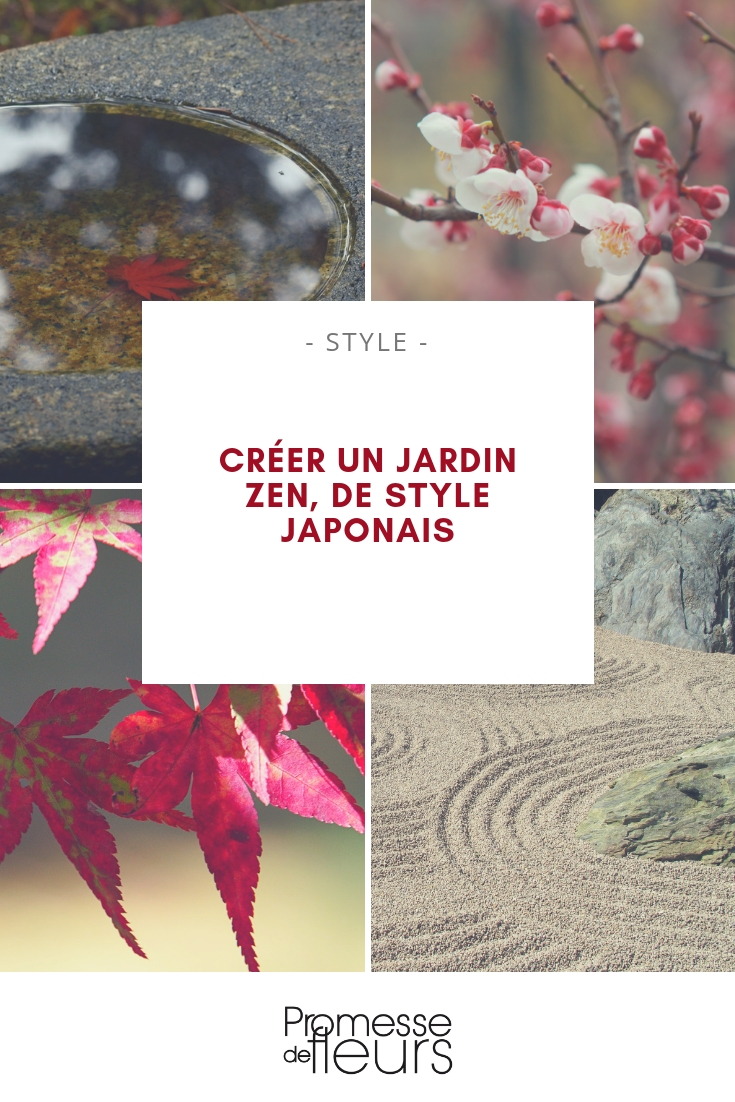































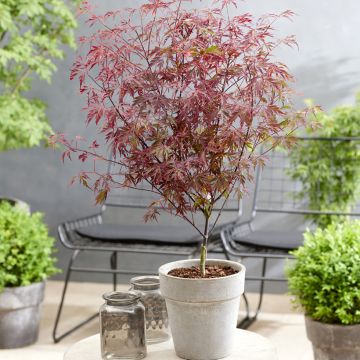
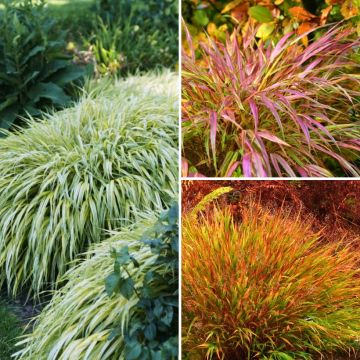

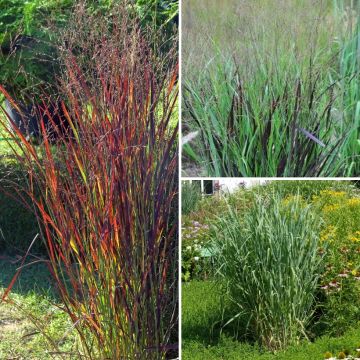
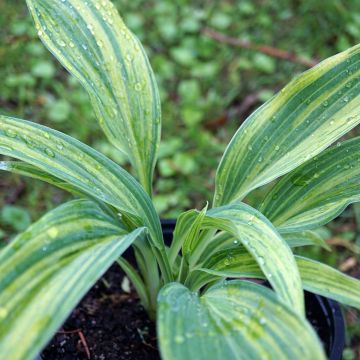
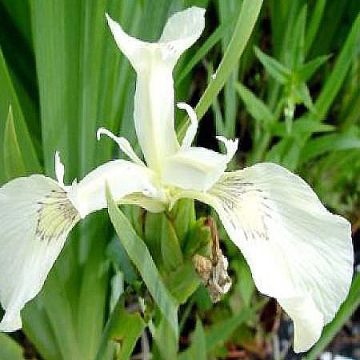
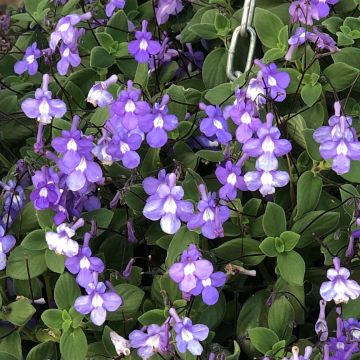
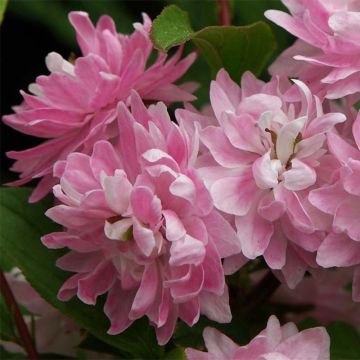
Comments